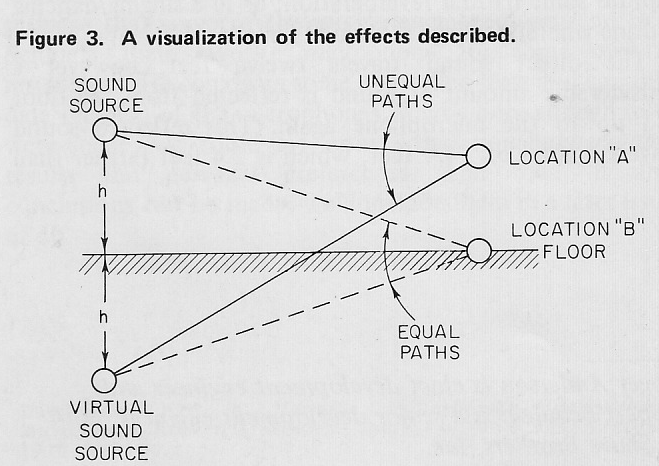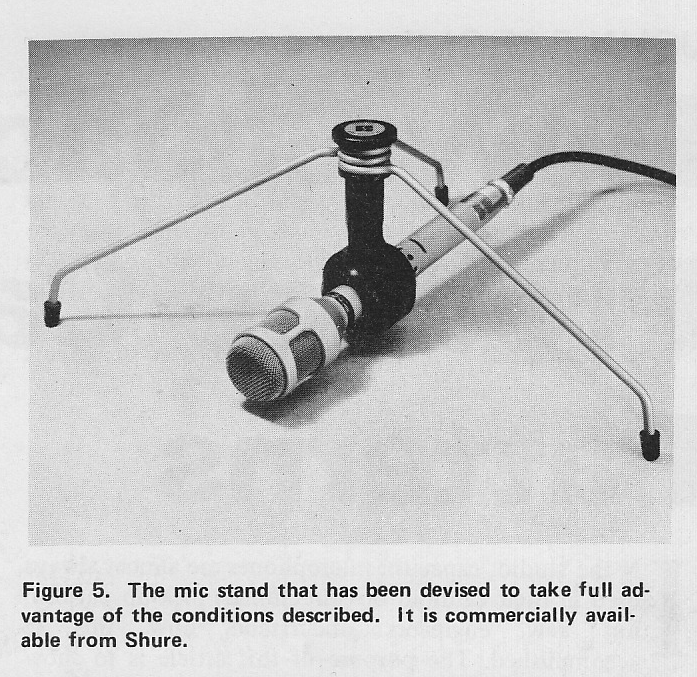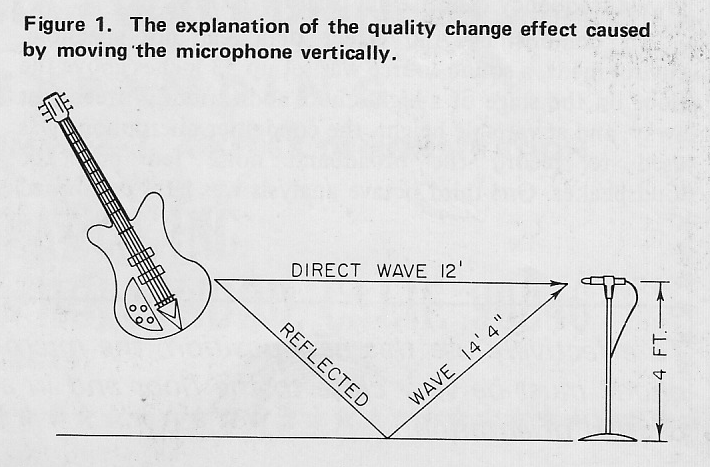Above: what the authors suggest you do NOT do…
How y’all doing out there in the land of Ooo… srry for the dearth of new ‘content’ lately; it’s been v v busy here at PS dot com HQ. Anyhow, I recently came across an interesting article in an old issue of DB magazine concerning distant-mic’ing. The authors are Roger Anderson and Robert Schulein; you can download it here:
DOWNLOAD: Distant_Micing
Essentially, the concept is that best-results with distant-mic’ing are obtained when the microphone is as close to the most prominent boundary (in most cases, the studio floor) as possible.
 I use both a distant-mic and a close -mic on pretty much every instrument that I record at GCR; I don’t always use both sources, but shit, we’ve got a big, great-sounding room, why not record it? But I’ve always set the distant-mic on a stand approx. 4-feet above the floor, much like the diagram above. I carefully position it to obtain what I feel is an appropriate balance between direct and reflected sound, but I’ve never thought much about how far it is from the floor. Anderson & Schulein make a very compelling argument for doing otherwise, and I’m gonna give it a shot at this week’s sessions.
I use both a distant-mic and a close -mic on pretty much every instrument that I record at GCR; I don’t always use both sources, but shit, we’ve got a big, great-sounding room, why not record it? But I’ve always set the distant-mic on a stand approx. 4-feet above the floor, much like the diagram above. I carefully position it to obtain what I feel is an appropriate balance between direct and reflected sound, but I’ve never thought much about how far it is from the floor. Anderson & Schulein make a very compelling argument for doing otherwise, and I’m gonna give it a shot at this week’s sessions.
 To all my working recording-engineer readers: thoughts on this technique? Weigh in,,,
To all my working recording-engineer readers: thoughts on this technique? Weigh in,,,

5 replies on “Of Interest to Recording Engineers: Interesting 1971 Article On Distant Mic’ing”
To me this looks precisely like the idea behind the surface boundary microphones? Am I missing something here?
Yes, that is true. What I found interesting is that by using this technique, ANY mic can essentially take on that characteristic.
Ever try the EV Mike Mouse?
http://www.electrovoice.com/downloadfile.php?i=971896
I’ve seen the engineers at Electrical Audio use two omnis (Altec 150s or Neumann 563s w/ the N55k capsules) as ambient mics on the floor while recording drums.
Here’s some photos:
http://i32.photobucket.com/albums/d30/OOtim/Picture090.jpg
http://i180.photobucket.com/albums/x180/mitgong/IMG_5274.jpg
Interesting
I usually set Sony c38 on floor up side down
As close as it can get to floor
Usually come out huge bottom end punch.
Its nice to see other parson be interesting in that sound
Including Albini guys.